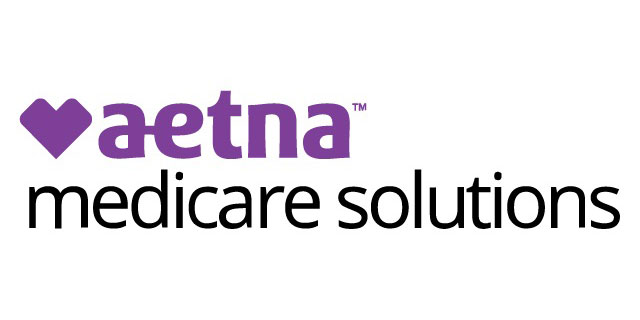A Step-by-Step Guide to Opening a Bank Account for Your Small Business
Susan Kelly
Dec 12, 2023
A specialized business bank account is needed to separate personal and company expenses in a small firm. A bank account helps businesses manage funds, improve invoicing, and simplify tax filing. A company checking account is essential for financial organization, whether you're a lone operator or managing a staff. Entrepreneurs may create a business bank account in minutes with the proper documentation. Here is the step-by-step guide for opening a bank account for a small business:
Select Type of Business Bank Account
Entrepreneurs who want to manage their funds must choose the correct business bank account. Starting with a company checking account is wise for most firms. Many free accounts have no minimum balance, making them ideal for daily purchases. Monthly transactions are included in key bank business account checking accounts, making ATM access straightforward. Additionally, firms may choose various customized business bank accounts:
Business Savings Accounts
Ideal for long-term savings, these accounts may provide attractive APYs and require a minimum balance to collect interest.
Merchant Accounts
Business checking accounts commonly include merchant accounts for debit and credit card payments. Transaction costs and merchant service fees should concern entrepreneurs.
Account diversification becomes prevalent as firms grow. Some keep payroll in a separate company checking account, while others use high-yield savings or business money market accounts for emergencies or expansion. Starting with a single company checking account is usual, but a developing firm may need many accounts from different banks to meet its financial demands.
Assess Business Account Options
Entrepreneurs should carefully examine checking accounts to ensure they meet their business demands and financial goals. Evaluation of business account alternatives involves several factors:
Assess each company's checking account's monthly costs. Some accounts eliminate or decrease fees for maintaining a minimum balance. Check if the company account has a minimum balance similar to the Bank of the West business account. Businesses with variable cash flows may benefit from accounts with reduced or no minimum balances. Check the number of fee-free transactions per account. High-transaction companies may profit from accounts with many free transactions.
Also, assess ATM withdrawal and deposit accessibility. Businesses that handle a lot of cash might benefit from an ATM network or charge reimbursement. Check the account's wire, transfer, and payment capabilities. International businesses may select accounts with efficient and cost-effective global transfer possibilities. You must check bill pay, invoicing, and connectivity with accounting software and other business tools available with each business matching account. These characteristics boost financial and operational efficiency.
Fill Out the Account Application
Key bank business account establishment requires completing the account application. Entrepreneurs can apply online, in person, or by phone, each with benefits.
- Online applications are fast and easy, letting company owners finish the procedure from home. This strategy may lack the personal touch of a commercial banker.
- In-person applications are more individualized. A business banker may answer questions and help during the application process, even though it takes longer than online.
- Some banks allow phone applications. This technology allows real-time support without a visit, bridging the gap between online and in-person applications.
Entrepreneurs should evaluate speed, convenience, and the specialized help they want when choosing an application method.
Fund Your Business Account
Funding your new company account is essential to its operation and financial demands. Many company bank accounts, like first national bank business account, may be opened without an initial deposit, although some business checking accounts demand a $25–$100 commitment. However, corporate savings accounts may require $1,000 to $25,000 in deposits, depending on the account and banking institution.
You may create a business account without an initial payment. However, some need money within a particular duration to avoid inactivity. Thus, read your business account's terms and conditions to comprehend initial funding and account maintenance needs.
Determine if an initial deposit is needed, choose a funding method like electronic transfers or checks, follow the bank's instructions, verify that the funds were successfully deposited, and comply with account requirements to avoid closure. Actively managing company account financing will help your financial center run effectively.
Set Your Business Account Up

Setting up your key bank business account is essential for smooth financial operations. After opening and funding your account, download your bank's mobile app and log in to online banking. Register or log in to create an account.
Link your new business account to your accounting software and other resources. Business bank accounts often integrate with QuickBooks, Xero, FreshBooks, Shopify, and Gusto. This combination simplifies financial administration and record-keeping. Add authorized users and establish permissions to maximize business bank account flexibility. This stage is crucial for firms with various members or different access demands. If your firm is an LLC, numerous members may need access.
Set up alerts for certain transactions or account activity to tailor your account. Set up recurring payments from your new company account to simplify finances. Your primary business debit card will be automatically mailed in 7–10 business days. Order checks and staff debit cards as required if your bank offers these choices. By properly configuring your business bank account and using its capabilities, you build a solid financial foundation for your organization.
Tips For Active Management of Business Account

Financial stability and strategic decision-making need active corporate bank account management. Essential tips for successful regulation:
- Keep your business bank accounts reconciled to match bank statements. This procedure quickly detects disparities, mistakes, and unlawful transactions. Accounting software simplifies reconciliation and detects inconsistencies instantly.
- Check your account for strange activity or expenses. Set up online bank alerts for significant transactions, low balances, and suspicious account behavior. Thus, concerns may be addressed quickly. Carefully analyze your monthly bank statements. Check for mistakes, inconsistencies, and illegal charges.
- Make use of your bank's online banking options. Many banks provide configurable financial dashboards, planning tools, and expense classification. Use these tools to understand your expenditures and make intelligent financial decisions. Then, set corporate budgets and financial goals. Compare your financial success to these standards regularly. Reevaluate your methods if your firm is falling short of financial objectives.
- Monitor your business's financial flow. Know payment deadlines, anticipate spending increases, and have enough cash to meet operating costs. An excellent financial position requires proper cash flow management. Use dual permission for large financial transactions for increased security. This reduces fraud by requiring numerous employees to authorize large withdrawals or transactions.







